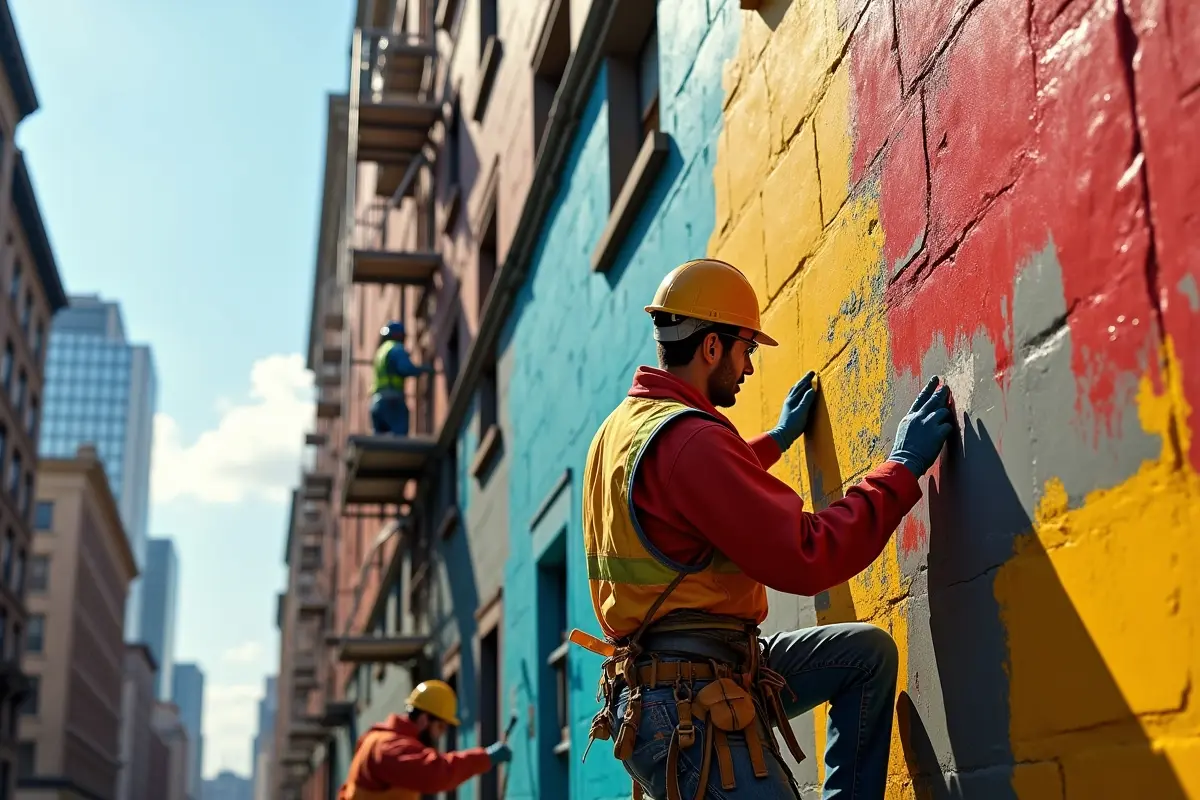
Common Challenges Commercial Painters Face and How They Overcome Them
Commercial painting might seem straightforward, but professionals in this field face a unique set of challenges. From juggling tight deadlines to meeting high client expectations, every project comes with its own hurdles. So, how do they handle these issues while delivering top-notch results?
Managing Tight Deadlines Without Sacrificing Quality
Have you ever noticed how quickly commercial painting jobs are often completed? That’s because time is money in this industry, especially when working on projects like retail spaces, offices, or industrial facilities. Deadlines are usually non-negotiable, and delays can disrupt business operations for clients.
Commercial painters Perth overcome this challenge by focusing on planning and efficiency. A detailed project schedule, including realistic timeframes for surface prep, priming, painting, and drying, is essential. They also rely on fast-drying paints, advanced tools like sprayers, and teams that work seamlessly together to maximise productivity. At the same time, they remain committed to quality by prioritising proper surface preparation and ensuring even application—because cutting corners isn’t an option.
Working Around Business Operations
Painting a commercial space isn’t always as simple as showing up, painting, and leaving. Painters often need to work around business hours to avoid disrupting operations. Imagine painting a busy café during lunchtime or a retail store during peak shopping hours.
To navigate this, commercial painters often opt for after-hours or weekend work. This flexibility minimises disruptions for clients and ensures businesses can operate as usual. Painters also use low-odour and low-VOC paints, which allow spaces to be used shortly after painting without discomfort for staff or customers.
Dealing with Large-Scale Projects
Painting a multi-story office building or an expansive warehouse isn’t the same as painting a bedroom wall. Commercial painters frequently handle large-scale projects, which demand significant resources, coordination, and stamina.
To manage these jobs effectively, professionals invest in specialised equipment, such as scaffolding, lifts, and high-capacity sprayers. These tools not only make the work safer but also help painters cover large areas quickly and evenly. Additionally, they split projects into manageable sections, ensuring consistent quality and preventing burnout.
Navigating Diverse Surfaces and Materials
Commercial spaces often feature a mix of surfaces—concrete walls, metal beams, wood trims, and even glass details. Each material requires a different approach, from choosing the right primer to selecting the best type of paint.
Experienced painters overcome this by leaning on their expert knowledge of products and techniques. For example, they use specialised coatings for metal surfaces to prevent rust or high-adhesion primers for glossy materials. Staying up-to-date with advancements in paint technology ensures they’re always equipped to handle whatever comes their way.
Weather and Environmental Challenges
For outdoor projects, the weather is a constant concern. Rain, humidity, or extreme temperatures can delay work and affect paint adhesion and drying times. Even indoor projects can be impacted by poor ventilation or temperature fluctuations.
Commercial painters mitigate these risks by monitoring forecasts and planning accordingly. They schedule outdoor work during favourable weather conditions and use weather-resistant paints when necessary. For indoor jobs, they often bring portable ventilation systems or climate control equipment to maintain optimal conditions for painting.
Meeting High Client Expectations
Let’s be honest: clients can be demanding, and they often expect flawless results. From colour precision to spotless finishes, commercial painters are under pressure to meet (and exceed) these expectations.
The secret to success here is clear communication and professional expertise. Painters take the time to discuss colour choices, finishes, and project goals with clients upfront. Many also provide digital mockups or colour samples to ensure everyone is on the same page before the first brushstroke. This proactive approach helps avoid misunderstandings and delivers results clients are thrilled with.
Ensuring Safety on the Job
Safety is non-negotiable in commercial painting, especially on large or high-risk projects. Painters often work at heights, use potentially hazardous materials, and navigate busy job sites. Without proper precautions, the risk of accidents is high.
Professional painters prioritise safety training and equipment to minimise risks. They use harnesses, helmets, and protective gear while following strict safety protocols, such as securing scaffolding and properly storing chemicals. Many also undergo regular training to stay compliant with safety regulations, keeping themselves and their teams protected.
Maintaining Consistency Across Large Teams
On larger projects, it’s common to have multiple painters working together. But ensuring a uniform finish when different people are involved can be tricky. Differences in technique or attention to detail can lead to noticeable inconsistencies.
To tackle this, experienced painters establish clear standards and communication from the start. They often assign supervisors to oversee quality control and ensure every team member is aligned with the project’s goals. Regular check-ins during the job help catch and correct any issues before they become major problems.
Keeping Up with Industry Trends and Technology
The painting industry isn’t static. New products, tools, and techniques are constantly being introduced, which means painters need to stay informed to remain competitive. Clients increasingly request eco-friendly paints or finishes that align with sustainable practices, for example.
To keep up, commercial painters engage in ongoing training and research. Many attend workshops, trade shows, or manufacturer demonstrations to stay ahead of trends. By embracing new technologies and sustainable practices, they not only improve their services but also meet the evolving needs of their clients.
The Secret to Success? Adaptability
What’s the common thread in all these solutions? Adaptability. Commercial painters thrive by staying flexible, thinking creatively, and always looking for ways to improve. Whether it’s adjusting to a last-minute schedule change or learning a new application technique, their ability to adapt is what sets them apart.


